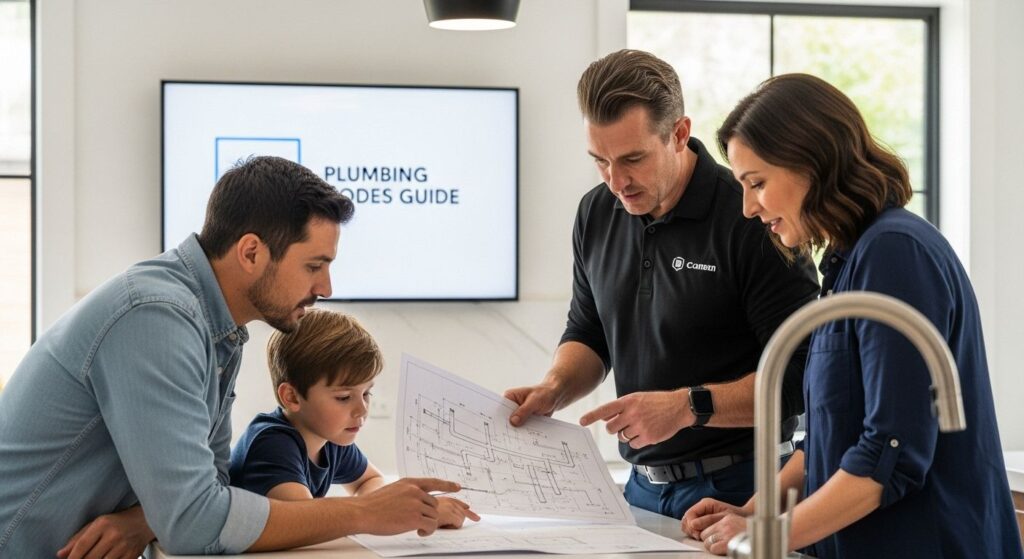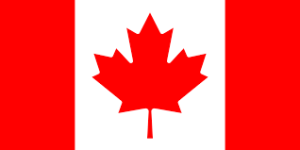Plumbing codes might sound like a maze of confusing rules, but they are behind every safe shower and clean glass of tap water in your home. Only a few people realize that fully compliant plumbing systems can increase your property value and lower your insurance premiums at the same time. Most homeowners assume codes are just paperwork, but missing even a minor detail could put both your health and your wallet at serious risk.
Table of Contents
- What Are Building Codes For Plumbing?
- Why Building Codes For Plumbing Matter: Safety And Compliance
- How Building Codes For Plumbing Work: Key Regulations Explained
- Understanding The Impact Of Plumbing Codes On Property Value
- Common Misconceptions About Building Codes For Plumbing
Quick Summary
| Takeaway | Explanation |
|---|---|
| Plumbing codes protect public health | They prevent water contamination and ensure proper waste disposal, safeguarding community health standards. |
| Compliance avoids legal and financial risks | Not adhering to plumbing codes can result in fines, invalidated insurance claims, and costly renovations. |
| Understanding codes enhances property value | Following plumbing codes can lead to higher resale values and lower insurance premiums, benefiting long-term investments. |
| Professional plumbing knowledge is essential | Only certified professionals should handle installations, as misunderstandings can lead to serious safety risks and costly repairs. |
| Codes are not optional or outdated | Building codes are essential safety standards that apply to all plumbing installations and are regularly updated for modern needs. |
What Are Building Codes for Plumbing?
Building codes for plumbing represent a comprehensive set of regulations and standards designed to ensure safe, sanitary, and efficient water and waste management systems in residential and commercial structures. These technical guidelines establish minimum requirements for plumbing design, installation, materials, and performance to protect public health and prevent potential environmental hazards.
The Purpose of Plumbing Codes
Plumbing codes serve multiple critical functions beyond simple construction rules. Protecting community health standards remains their primary objective. These regulations aim to:
- Prevent contamination of potable water systems
- Ensure proper waste disposal
- Maintain structural integrity of plumbing infrastructure
- Standardize installation practices across different regions
Local and provincial authorities develop these codes through collaboration with engineering professionals, public health experts, and industry specialists. In Ottawa, plumbing codes reflect specific regional requirements while adhering to national safety standards.
Key Components of Plumbing Codes
Building codes for plumbing encompass several essential technical domains. These include precise specifications for:
- Pipe material selections
- Drainage system configurations
- Water pressure requirements
- Fixture installation standards
- Ventilation and backflow prevention mechanisms
Professional plumbers must thoroughly understand these intricate regulations.
Here is a table outlining the primary technical domains and features covered by plumbing codes, helping homeowners understand the key areas regulated for safety and compliance:
| Key Component | Description |
|---|---|
| Pipe Materials | Specifies approved materials to prevent leaks, contamination, and ensure system durability |
| Drainage System Configurations | Outlines layout and design standards to maintain proper waste flow and prevent blockages |
| Water Pressure Requirements | Sets minimum and maximum allowable pressures to protect fixtures and prevent water hammer |
| Fixture Installation Standards | Details correct methods for installing sinks, toilets, and showers to ensure proper function |
| Ventilation and Backflow Prevention | Defines methods to prevent sewer gases and contaminated water from entering potable supply |

Learn more about our local plumbing standards to understand how these codes directly impact your home’s water and waste management systems.
Understanding building codes for plumbing is not just a technical requirement but a fundamental aspect of maintaining safe, functional residential infrastructure. Homeowners who appreciate these standards can make more informed decisions about their property’s plumbing maintenance and potential renovations.
Why Building Codes for Plumbing Matter: Safety and Compliance
Building codes for plumbing represent far more than bureaucratic paperwork they are critical safeguards protecting homeowners from potential health risks and structural damage. These comprehensive regulations ensure that every pipe, fixture, and drainage system meets stringent safety standards designed to protect both individual households and broader community infrastructure.
Health and Safety Implications
The primary purpose of plumbing codes extends well beyond technical specifications. Research from the National Sanitation Foundation demonstrates that properly implemented plumbing codes dramatically reduce risks of waterborne diseases and contamination. Potential hazards prevented by these regulations include:
- Cross contamination between potable water and waste systems
- Bacterial growth in poorly designed drainage networks
- Water pressure inconsistencies that compromise system integrity
- Potential structural damage from improper installation
Legal and Financial Consequences
Non compliance with building codes for plumbing can result in significant legal and financial repercussions. Homeowners who bypass official regulations might face:
- Invalidated home insurance claims
- Substantial fines from municipal authorities
- Mandatory system redesign and reconstruction
- Potential legal liability for health and safety violations
Understand more about local plumbing compliance requirements to protect your property investment and ensure long term system reliability. Professional plumbers recognize these codes as essential guidelines that protect both the immediate household and the broader community infrastructure.
How Building Codes for Plumbing Work: Key Regulations Explained
Building codes for plumbing operate as intricate frameworks of technical standards that govern every aspect of water distribution and waste management systems. These regulations function as comprehensive blueprints that dictate how plumbing infrastructure must be designed, installed, and maintained to ensure maximum safety and performance.
Regulatory Development and Enforcement
According to the Canadian Construction Materials Centre, plumbing codes are developed through collaborative processes involving municipal authorities, engineering professionals, and public health experts. The development process involves:
- Extensive research on emerging technologies
- Analysis of historical infrastructure performance
- Evaluation of potential health and safety risks
- Consultation with industry specialists
Local jurisdictions like Ottawa adopt and adapt national plumbing standards to reflect regional environmental conditions and infrastructure challenges. These codes are periodically updated to incorporate technological advancements and address evolving community needs.
Technical Standards and Compliance Mechanisms
Building codes for plumbing encompass detailed specifications that regulate multiple technical domains. Key regulatory focus areas include:
- Material quality and compatibility
- Pipe diameter and installation techniques
- Water pressure and flow rate requirements
- Drainage system design principles
- Backflow prevention mechanisms
Explore our comprehensive guide to local plumbing regulations to understand how these intricate standards protect residential and commercial infrastructure. Professional plumbers must demonstrate comprehensive knowledge of these regulations, ensuring that every installation meets or exceeds the prescribed technical requirements.
Understanding the Impact of Plumbing Codes on Property Value
Plumbing codes play a crucial role in determining property value, serving as a critical benchmark for potential buyers and real estate professionals assessing a building’s overall structural integrity and safety standards. Compliance with these regulations directly influences market perception, insurance eligibility, and long term property investment potential.
Valuation and Insurance Implications
Research from the Canadian Real Estate Association indicates that properties with fully compliant plumbing systems can experience significant value premiums. Potential financial benefits include:
- Higher resale market valuations
- Lower insurance premium rates
- Reduced risk of unexpected repair costs
- Enhanced buyer confidence during property transactions
Insurance companies frequently use plumbing code compliance as a key metric when assessing property risk. Homes with outdated or non compliant plumbing systems may face higher insurance rates or potential coverage limitations, directly impacting overall property marketability.
Investment Protection and Long Term Value
Proper adherence to building codes for plumbing represents a strategic approach to protecting property investment. Non compliant plumbing systems can:
- Decrease property market value
- Trigger mandatory retrofit expenses
- Create potential legal and insurance complications
- Compromise structural integrity
Discover how professional plumbing upgrades enhance property value to understand the direct correlation between code compliance and real estate investment potential. Homeowners who prioritize maintaining current plumbing standards ultimately safeguard their most significant financial asset.
![]()
Common Misconceptions About Building Codes for Plumbing
Building codes for plumbing are complex regulatory frameworks frequently misunderstood by homeowners and DIY enthusiasts. These misconceptions can lead to costly mistakes, potential safety hazards, and significant financial risks that extend far beyond simple installation errors.
Myths About Code Complexity and Enforcement
According to the National Association of Home Builders, many homeowners mistakenly believe that plumbing codes are optional or unnecessarily complicated. Critical misunderstandings include:
- Assuming codes are merely bureaucratic suggestions
- Believing older installations are automatically acceptable
- Thinking professional certification is unnecessary
- Underestimating the importance of periodic system inspections
In reality, these regulations represent carefully developed safety standards designed to protect public health and ensure consistent infrastructure performance across residential and commercial properties.
Technical Misconceptions and Practical Implications
Homeowners often harbour dangerous misconceptions about plumbing system requirements. Common technical myths include:
- Believing all pipes are interchangeable
- Assuming DIY repairs are equivalent to professional installations
- Thinking modern materials always improve system performance
- Underestimating the complexity of drainage and ventilation systems
Learn about costly DIY plumbing mistakes to understand why professional expertise matters. These misconceptions can lead to significant long term damage, potentially compromising your property’s structural integrity and creating expensive repair scenarios that far exceed initial installation costs.
The following table compares some of the most common misconceptions about plumbing codes with the accurate realities, helping homeowners identify and avoid costly mistakes:
| Common Misconception | Reality |
|---|---|
| Plumbing codes are just bureaucratic suggestions | Codes are mandatory safety standards enforced by local authorities |
| Older plumbing installations are always acceptable | All systems must comply with current codes, regardless of age |
| DIY repairs are equal to professional installations | Only certified plumbers have the expertise to meet all technical and legal requirements |
| Modern materials always result in better performance | Materials must be compatible and approved by code, not just modern or new |
| Periodic inspection of plumbing isn’t necessary | Regular inspections help ensure continued compliance and highlight safety or efficiency issues |
Protect Your Home with Code-Compliant Plumbing Solutions
Worried about complex plumbing codes or facing uncertainty with your home’s water systems? Many Ottawa homeowners feel stressed about meeting building codes for plumbing, especially when health, safety, and property value are on the line. Skipping over regulations can expose your family to hidden risks and unexpected expenses. Our team at Delta Plumbers Ottawa deeply understands local and national plumbing standards, so your upgrades and repairs are completed right the first time. For tips and regional insight, you can also browse our Uncategorized Plumbing Resources.

Ready to make sure your plumbing is safe and fully compliant? Contact us now for expert service and fast response. Trust Ottawa’s professionals to keep your home secure and up-to-code. Visit Delta Plumbers Ottawa today and experience peace of mind with every tap and drain in your house.
Frequently Asked Questions
What are building codes for plumbing?
Building codes for plumbing are regulations that establish safety and performance standards for water and waste management systems in buildings. They aim to protect public health, ensure proper waste disposal, and maintain plumbing infrastructure integrity.
Why are plumbing codes important for homeowners?
Plumbing codes are essential for homeowners as they safeguard against health risks and structural damage. Compliance ensures safe water systems, reduces the risk of contamination, and protects property investments from legal and financial consequences.
How can I ensure my plumbing system complies with local building codes?
To ensure compliance, homeowners should consult a licensed plumber familiar with local plumbing codes. Regular inspections and following updates to local regulations can also help maintain compliance with the current standards.
What can happen if I don’t follow plumbing codes?
Failure to comply with plumbing codes can result in significant consequences, including fines from local authorities, invalidated insurance claims, and the need for costly redesigns of plumbing systems. It may also pose health risks from contaminated water supplies.









